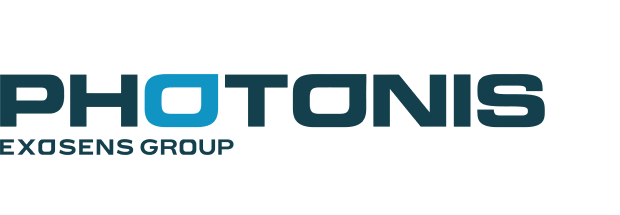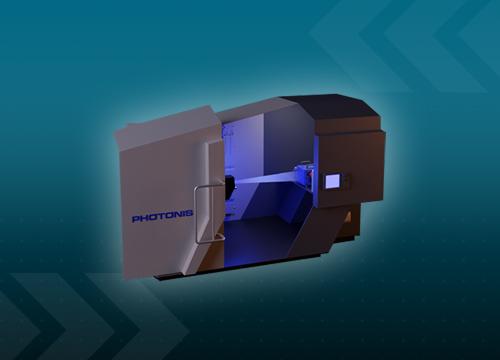Neutronic imaging is a non-destructive method used to see inside objects that may be inpenetrable by X-ray or other techniques. Neutrons offer the benefit of being able to see through heavy metals such as lead but can also be used to examine delicate processes.
Photonis Neutron imaging device is designed to provide either still images or video using both cold and thermal neutron imaging techniques for non-destructive testing and neutron tomography. Discover on how to process neutron images faster with this high-resolution detection system from Photonis.
Learn more about neutron imaging advancements
Need some answers? Ask our experts!
Contact us
![Neutronic [i] Neutron Imager neutronic.](https://cdn.photonis.com/sites/default/files/styles/product/public/2022-09/neutronic.png?itok=r881fmO8)
Neutron imaging advancements: Unlocking the power of neutron technology
Neutron imaging is a cutting-edge non-destructive testing technique that complements traditional radiography methods. Unlike X-rays, which struggle to penetrate dense materials, neutrons offer unparalleled access, penetrating heavy metals such as lead with ease while delicately examining intricate structures. This revolutionary technology, spearheaded by Photonis, introduces a new era of imaging capabilities, revolutionizing fields from nuclear science to materials studies.
At the heart of this innovation lies the Neutronic[i], a state-of-the-art thermal neutron imaging system built on Photonis' pioneering Microchannel Plate technology. This system boasts remarkable efficiency, outperforming traditional scintillator-based detectors without sacrificing resolution. With superior sensitivity and a large field of view, the Neutronic[i] paves the way for groundbreaking studies across diverse fields.
The Neutronic[i] system offers a myriad of advantages, including faster imaging processes, superior spatial resolution, and customizable options to suit specific research needs. Its core components, including a neutron-sensitive Microchannel Plate and a phosphor screen, work seamlessly within a vacuum chamber, optimized for maximum performance. This comprehensive system, paired with Photonis' Nocturn range of low-noise CMOS digital cameras, ensures precise imaging with minimal noise interference.
With a sensitivity significantly higher than present-day techniques, the Neutronic [i] enables new sorts of imaging studies. The system delivers large-format still images within seconds and can facilitate tomographic reconstructions in just 60-90 minutes. This accelerated workflow not only enhances efficiency but also minimizes sample exposure to neutron beams, ensuring real-time insights without compromising safety.
The versatility of neutron imaging extends beyond traditional applications, offering invaluable insights into various scientific realms. By interacting with nuclei rather than electrons, neutrons unveil intricate details of sample composition and structure, offering unparalleled contrast for comprehensive analysis. From fundamental research to industrial applications, neutron imaging emerges as a cornerstone of modern science, facilitating groundbreaking discoveries with every scan.
The Neutronic[i], powered by a neutron source, interacts with elements to reveal intricate details of samples with unparalleled clarity. This non-destructive analysis tool offers a detailed view of the structure and composition of materials, including investigations of light elements like hydrogen, oxygen, and carbon that are difficult to detect using other imaging techniques.
Neutron tomography, a cornerstone of non-destructive testing, offers a holistic view of sample structures, facilitating comprehensive analysis and fueling scientific breakthroughs.
By processing neutron images with advanced algorithms, researchers can uncover hidden details within objects, shedding light on previously unseen phenomena.
The Neutronic[i] system, with its ability to detect a large number of neutrons, enables researchers to conduct high-throughput imaging studies, accelerating the pace of discovery.
In the field of neutron imaging, water plays a crucial role as both a sample medium and an object of study, highlighting its significance in various scientific disciplines.
Neutron imaging, with its unique interaction with matter, provides invaluable insights into the behavior of sample elements, offering a deeper understanding of their properties and functions.
Researchers can utilize neutron imaging to explore the intricate interplay between light elements and heavy metals, shedding light on complex material compositions.
By integrating neutron imaging into their research facility, scientists gain unprecedented access to the inner workings of materials, fueling innovation across diverse scientific disciplines.
In essence, neutron imaging transcends conventional boundaries, offering a holistic approach to sample analysis and structural studies. As researchers continue to push the boundaries of innovation, the Neutronic[i] remains at the forefront, driving advancements in nuclear science, materials research, and beyond. With its unparalleled capabilities and customizable features, this revolutionary system unlocks a world of possibilities, shaping the future of scientific exploration.
To explore further, here are some additional resources below to learn more about neutron imaging and our cutting-edge technologies:
- Read the article photonis introduces neutronic [i] system for neutron imaging
- Read the article moving to industrial applications: oct enables hi-res non-destructive depth analysis
- Exploring ion and electron detection
- Discover Photonis photo-detection and low light conditions imaging Solution
- Find additional content about neutron imaging in our resource center
What's new in Neutrons?
See all

Coronado Springs Resort and Convention Center .
FROM Oct 06th 2025 TO Oct 09th 2025
ASNT exhibition 2025
Join Exosens at ASNT 2025 Annual Conference - Coronado Springs Resort and Convention Center – Orlando, FL Booth: #1128

Baltimore Convention Center.
FROM Jun 01st 2025 TO Jun 05th 2025
ASMS 2025
Visit Photonis at ASMS 2025 - Booth: #322 - Baltimore, MD Explore Next-Generation Detection Technologies with Photonis

